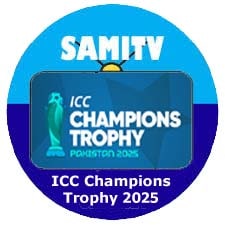
Cricket Series IND vs W.I
The European Cricket Series has taken the cricketing world by storm. This article delves into the history, format, impact, controversies, and future of this exciting tournament.
Introduction:
Cricket has always been a popular sport in Europe, but the emergence of the European Cricket Series (ECS) has taken the game to new heights. Launched in 2019, the ECS is a T10 tournament that brings together some of the best cricketing talents from across the continent. With its unique format, fast-paced action, and exciting matches, the ECS has quickly become a fan favorite. In this article, we will explore the history, format, impact, controversies, and future of the European Cricket Series.
History:
The European Cricket Series was launched in 2019 by the European Cricket Network (ECN) with the aim of promoting cricket in Europe. The tournament was an instant success, attracting a large audience and generating significant interest from cricketing circles. The inaugural season of the ECS saw 16 teams competing in 20 matches over a period of five days. Since then, the tournament has gone from strength to strength, with more teams and matches being added to the schedule each year.
Format:
The ECS follows a T10 format, with each team playing 10 overs per inning. The tournament is divided into two stages: the group stage and the knockout stage. The group stage consists of multiple groups, with each group comprising four to six teams. Each team plays against every other team in their group once. The top teams from each group progress to the knockout stage, which consists of quarterfinals, semifinals, and a final.
Qualification:
The qualification process for the ECS is based on the rankings of the national cricket boards. The top-ranked teams from each country are invited to participate in the tournament. The qualification process ensures that only the best teams get to compete in the ECS, thus ensuring the highest quality of cricketing action.
Group Stage:
The group stage of the ECS is where the action begins. With multiple groups comprising four to six teams each, there are plenty of matches to keep the fans engaged. Each team plays against every other team in their group once, and the top teams from each group progress to the knockout stage. The group stage provides an opportunity for the teams to find their form and build momentum for the crucial knockout matches.
Knockout Stage:
The knockout stage of the ECS is where the tension and excitement reach their peak. The top teams from each group battle it out in the quarterfinals, with the winners progressing to the semifinals. The winners of the semifinals then face off in the final to determine the champion of the tournament. The knockout stage is where the teams have to bring their A-game and fight for every run and wicket.
Impact:
The impact of the ECS on European cricket has been immense. The tournament has provided a platform for young and upcoming cricketers to showcase their talent and make a name for themselves. The ECS has also attracted a large audience, both in Europe and around the world, thus boosting the popularity of the sport. The financial impact of the ECS has also been significant, with the tournament generating revenue through sponsorships, broadcasting rights, and ticket sales.
Financial Impact:
The financial impact of the ECS has been a significant factor in its success. The tournament has generated revenue through sponsorships, broadcasting rights, and ticket sales. The ECS has also provided opportunities for local businesses to get involved and benefit from the increased footfall generated by the tournament. The financial success of the ECS has enabled the organizers to invest in the growth of cricket in Europe and ensure the sustainability of the tournament.
Sporting Impact:
The sporting impact of the ECS has been equally significant. The ECS has helped to raise the standard of cricket in Europe and provided a platform for young and upcoming cricketers to showcase their skills. The tournament has also enabled players from different countries to come together and learn from each other, thus promoting cross-cultural exchange. The ECS has helped to break down barriers and promote cricket as a truly global sport.
Famous Moments and Memorable Matches:
The ECS has produced some memorable moments and matches since its inception. In the inaugural season, the Italian team, Brescia Cricket Club, made history by winning their first match in the tournament against Fresh Tropical CC. In the second season, the Romanian team, Cluj Cricket Club, caused a major upset by defeating the favorites, Dreux Cricket Club, in the quarterfinals. The ECS has also seen some breathtaking individual performances, such as Awais Ahmed’s 88 not out off 34 balls for the Belgian team in the third season.
Controversies and Criticisms:
Like any major sporting event, the ECS has also had its fair share of controversies and criticisms. One of the major criticisms of the tournament has been the lack of representation from some of the major cricketing nations, such as England and Australia. Some have also criticized the format of the tournament, arguing that T10 cricket does not provide a true test of a player’s skills. There have also been concerns raised about the quality of the pitches and the standard of umpiring in the tournament.
Future:
Despite the criticisms, the future of the ECS looks bright. The tournament has gone from strength to strength in the last few years, and there are plans to expand the tournament further. The organizers are looking to increase the number of teams and matches in the tournament, and also to improve the standard of facilities and umpiring. The ECS has also generated significant interest from major cricketing nations, and there are plans to involve them in the tournament in the future.
FAQs:
Q: How many teams participate in the ECS?
A: The number of teams varies each season, but typically there are around 20 teams that participate in the tournament.
Q: What is the format of the ECS?
A: The ECS follows a T10 format, with each team playing 10 overs per inning. The tournament is divided into a group stage and a knockout stage.
Q: How are teams selected to participate in the ECS?
A: The qualification process for the ECS is based on the rankings of the national cricket boards. The top-ranked teams from each country are invited to participate in the tournament.
Q: Where are the matches played?
A: The matches are played in different venues across Europe, with each season’s schedule released before the start of the tournament.
Conclusion:
The European Cricket Series has established itself as one of the premier T10 tournaments in the world. With its unique format, exciting matches, and high-quality cricketing action, the ECS has captured the imagination of cricket fans across the globe. The tournament has had a significant impact on European cricket, promoting the sport and providing opportunities for young and upcoming cricketers. While there have been criticisms of the tournament, the future looks bright for the ECS, and we can expect to see more thrilling matches and memorable moments in the years to come.



